
Parrot Jungle & Gardens
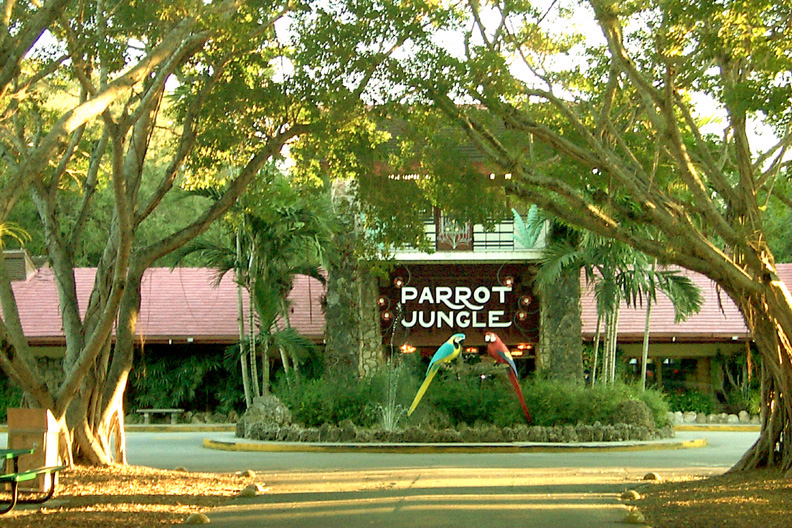
One of the most luxuriant tropical plant collections in South Florida was Parrot Jungle and Gardens (PJG). Since its opening in 1936, PJG had evolved from a typical roadside tourist attraction with a parrot show and pretty gardens to a South Florida historical icon. This privately owned park was not subsidized by any government or municipality. Attention to detail and a commitment to quality was the reason PJG survived and flourished. A horticultural staff and grounds crew of 15 employees maintained the 14 acres to high horticultural standards.
The concept of an intimate encounter with the tropics was very successful. Visitors were always fascinated by the raucous, brightly colored parrots and the incredible diversity of the tropical gardens.
In a non-zoo like atmosphere many species of animals were featured. A large collection of Macaws, Cockatoos, and other parrots made up the majority of the animals exhibited. A flock of Caribbean Flamingos lived and bred in the park since the 1950's. These were the Flamingos seen at the beginning of the "Miami Vice" TV show. Many species of reptiles were found there; Alligators and Crocodiles could be seen there as well as Aldabra Tortoises, Iguanas, and snakes.
The "Jungle" part of PJG was actually the last remaining Cypress Slough on the east coast of South Florida. A slough is a swampy habitat that is usually associated with a river and distinguished mainly by the large Bald Cypress (Taxoduim distichum) trees and the knees associated with them. Part of Snapper Creek originally ran through this site before it was rerouted and turned into a canal. Until hurricane Andrew in 1992, the entire three acres in the slough were covered by a canopy of Bald Cypress that was well over 100 feet high. The national champion Pond Apple (Annona glabra) was also in the slough. After the storm about 60% of the large trees were lost and the champion Pond Apple was severely damaged. Some of the Cypress trees, according to their growth rings, were about a century old. The trees that had not snapped in half and had at least half of their root mass still attached to the trunk were stood back up. Our success in standing up large trees was high and gave us back some much needed canopy and shade.
Losing over 60% of the tree canopy meant that suddenly full sunlight was reaching the ground. One benefit of so much sunlight was the increased growth and flowering of the large collection of tropical plant species located in the slough. There was much more color, making the garden more attractive to the casual plant observer. Another advantage of increased sunlight was the resurgence of native plant species. A few months after hurricane Andrew, Bald Cypress seedlings began natural appearing in the Cypress Slough. This is the only time I have seen this at PJG in the 25 years that I had worked there. Many of these seedlings survive today and are now close to 15 feet tall.
Adjacent to the cypress slough is a hardwood hammock. This is an area that is a few feet higher (above the water table) than the cypress slough and is composed of a distinct group of trees, mainly evergreen hardwood trees from the West Indies. In South Florida this is considered to be the ultimate climax community.
Even before man there were hurricanes and fires that could destroy an ecosystem. A succession of plant communities will occur on a disturbed site until a final and stable system is reached. The hardwood hammock is that stable ecosystem here in south Florida. Some of the larger native trees found in this area are live oak (Quercus virginiana), strangler figs (Ficus aurea and F. citrifolia) and gumbo-limbo (Bursera simaruba). One of the native trees that we have utilized in the hardwood hammock is Florida trema (Trema micrantha). This is an attractive tree with tiny orange fruits that are bird dispersed. An open canopy provides shade but also allows sunlight to penetrate to the plants below. In two years they had grown enough to provide an adequate canopy. Now 10 years after hurricane Andrew most of the "Jungle" is comfortable to walk through even on the hottest days of summer.
There were many native plant species at PJG, but what made the park so special was the diversity of exotic tropical plant species cultivated there. Bromeliads were one of the plant families featured, with over 70 species represented. Heliconias, palms, gingers, Acanthaceae (the shrimp plant family), and a multitude of other plant families were a common sight throughout the park.
Parrot Jungle and Gardens closed in September 2002. A new 18 acre Parrot Jungle Island is now under construction in the City of Miami and will open in 2003.



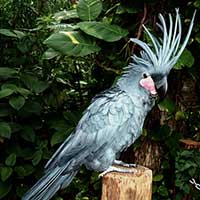
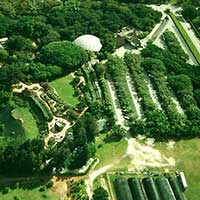
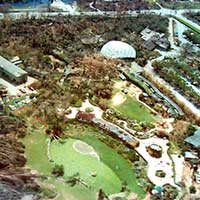
 About Theme Parks, Zoos & Tropical Design
About Theme Parks, Zoos & Tropical Design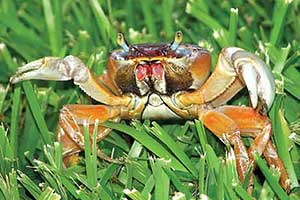 Integrated Pest Management in a Zoological Theme Park, Wing Beats the Journal of the American Mosquito Association
Integrated Pest Management in a Zoological Theme Park, Wing Beats the Journal of the American Mosquito Association The Environmental Lawn
The Environmental Lawn Design with Integrated Pest Management
Design with Integrated Pest Management Creating Islands in Aquatic Ecosystems
Creating Islands in Aquatic Ecosystems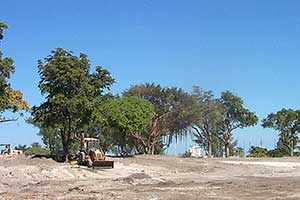 Building a New Jungle - Contouring the Site and Creating a Tree Canopy
Building a New Jungle - Contouring the Site and Creating a Tree Canopy Watson Island - Remaking History
Watson Island - Remaking History The Gardens at Parrot Jungle Island, The First Year
The Gardens at Parrot Jungle Island, The First Year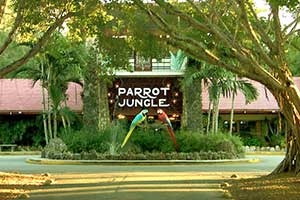 Parrot Jungle & Gardens
Parrot Jungle & Gardens